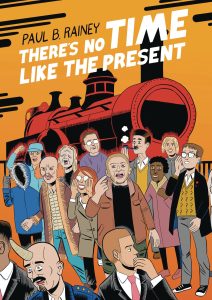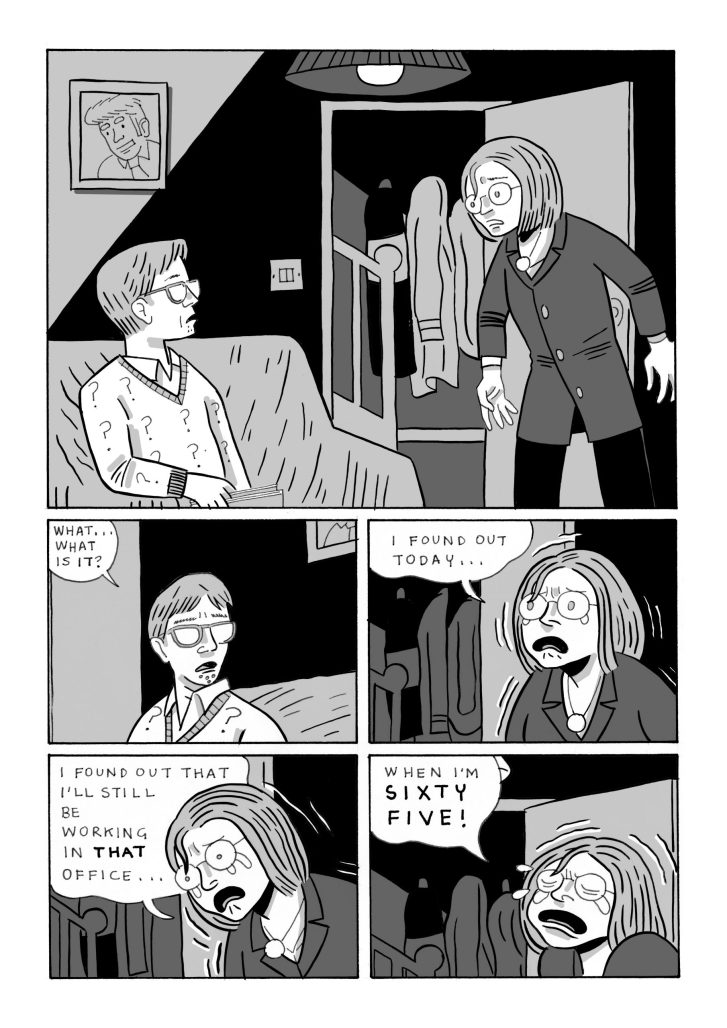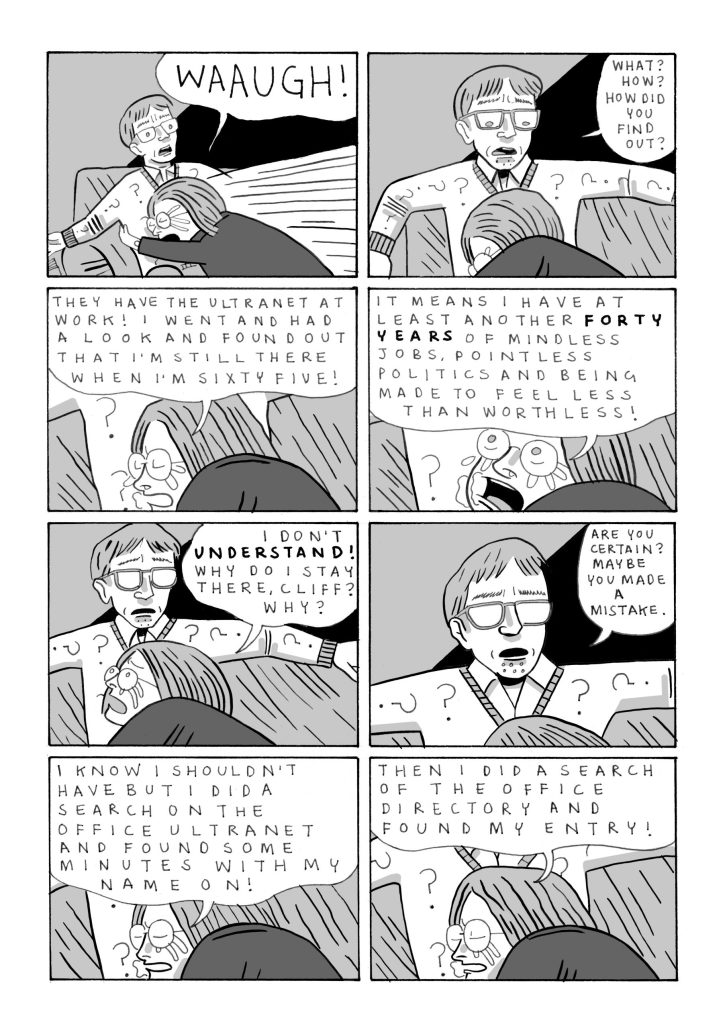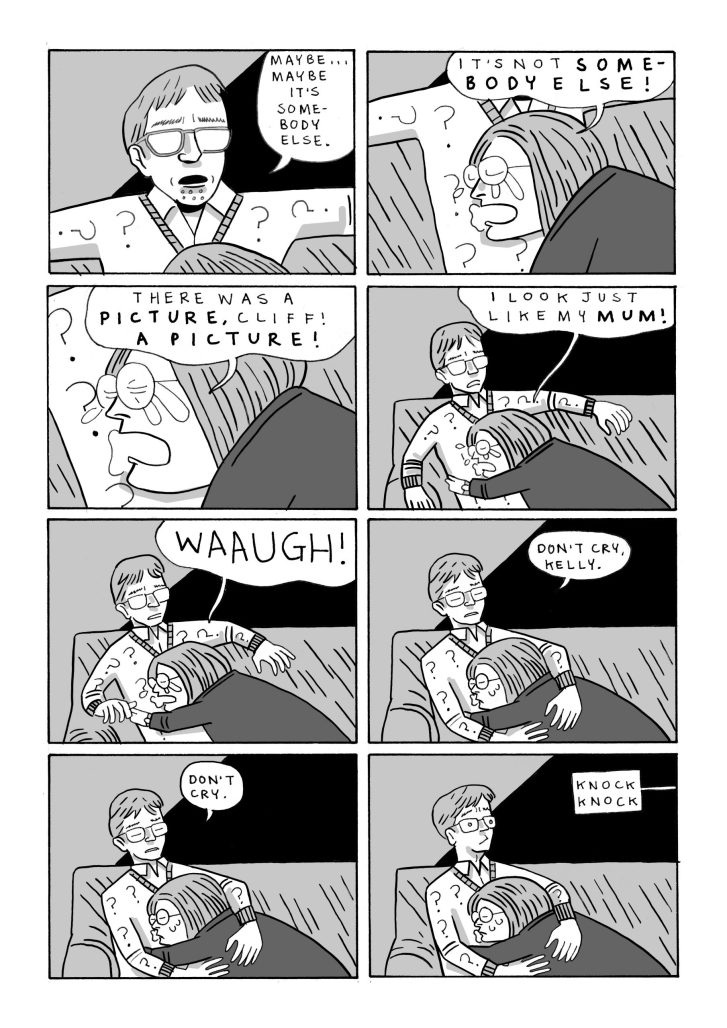
 There’s No Time Like The Present
There’s No Time Like The Present
Cartoonist: Paul B. Rainey
Publisher: Drawn & Quarterly
Publication Date: March 2025
Recommending comics can be tricky business. I suppose that’s true of any media, but I feel like there’s something uniquely tricky about telling your friends to check out a comic, something to do with how quickly we move through (most) comics, combined with how much of stories the medium leaves for us to personally fill in. That speed-personalization combo means a bad mood or a slightly different lens can sometimes fully alter the way I might perceive a comic versus how someone else experiences it. When British cartoonist Paul B. Rainey’s last book, Why Don’t You Love Me?, came out in early 2023, however, I heaped praise upon it, encouraging pretty much anyone and everyone to pick it up.
In my review, I called it “a true masterwork, the carefully considered opus of someone who has spent years working within the medium and wants to push what it’s capable of.” Not to rehash too much more of a piece about a different book, but I found Why Don’t You Love Me? to be a sort of formulistic ambush, a book that lured you into thinking it was one thing — a crude updating of Sunday newspaper strips about families that don’t get along — and then ended up being about something very different, the multiverse and the very nature of our existence. Ultimately though, I talked to a few people who read it because of me, and they had different experiences than I did with the material.
Nobody disliked the book (it’s really really well-done), but the way it surprised me with what I took to be playful experimentation was not something some of my friends even really noticed. This was all on my mind as I dove into Rainey’s new book, There’s No Time Like the Present, a time travel story anchored primarily on a group of stereotypical aging sci-fi fans, who at times tip into unpleasant Comic Book Guy stereotypes made famous by The Simpsons. I was wondering how Rainey might follow-up Why Don’t You Love Me?, and the answer was with a story that feels more straightforward, despite embracing arguably the thorniest genre material there is with time travel.
But that’s how There’s No Time Like The Present felt to me. Whereas Rainey’s multiverse book felt grandly experimental, his new time travel book grounds its fantastical sci-fi touches in the mundane. It’s about a trio of characters whose lives are given meaning by new episodes of Dr. Who and waiting for Star Wars bootlegs to arrive in the mail. They are not particularly notable people. And so when humanity discovers time travel, the biggest impact it seems to have on our leads is whether they should watch TV shows from the future, or stick to material as it airs.
This to me felt like a novel way to approach a time travel story. For most of the book, there are none of the familiar tropes, no rewritings of reality due to someone mucking around in the past. There’s no one going back in time to warn our characters to avoid some grave calamity (they can all literally just search and see how their lives turn out). We are experiencing a world impacted by the global advent of time travel through the normalist of normal guys, guys who are at best a little dull and at worst slightly toxic nerds. They don’t have great relationships with women, or with their parents, or even with each other. And as that unfolds, the impacts of time travel swirl lightly around them, as time travel might in the lives of you or I.
It’s almost a familiar feeling, the way that so much tech in the past 15 years has gone from novel to normal, from theoretical to corporate and common and monetized. Rainey has done some deep thinking about all of it too. There’s new lingo invented for this technology, there’s new tech to support the tech, there are differing attitudes toward its use, and there’s ultimately government regulation, which we also see played out in interesting ways in normal folks’ lives.
And while it doesn’t break down neatly into equal sections, the book’s narrative is broken off into what feels like three distinct parts. There’s Part I, wherein we learn about our characters, the relationships between them, and the ways that time travel exists…and mostly does not effect them. There’s a massive time jump, and a Part II where we see most of our same cast later in life. And then there’s a Part III, wherein we catch up with a character who has gone full bore into the fantastical, and lived a life that would only be possible by embracing time travel and all it offers.
Rainey is a fantastic storyteller, and does a great job telling this story throughout, rendering it in a way that feels almost compulsively readable. There are mysteries and recurring themes/jokes and very distinct characters. It’s a long book, but I read it quickly, needing to know where this was going and how it all comes together. If you enjoyed Why Don’t You Love Me?, especially the sense of humor and the moments where it was at its most introspective about human relationships, you’re almost certain to really enjoy this book as well. Rainey is making everyday sci-fi, slice of life sci-fi, or whatever you want to call it. Although there’s also a third act where we get a speed run through what a more traditional time travel story set in this world might look like, and it’s quite fun.
Getting back to the matter of recommendation: would I recommend this book as broadly as I did Why Don’t You Love Me? I’m not quite sure. I think it’s an excellent read, and if you have experience with sci-fi/fantasy fandom prior to it going mainstream at the end of ’00s or so, you’re more likely to absolutely love There’s No Time Like the Present. I found it to be darkly funny, thoughtful, and ultimately poignant.
But I also thought the varied cast here and the many many themes meant that this book didn’t quite come together neatly. That’s not necessarily a bad thing; I didn’t mind it, but there is a messiness here to some of the character arcs. In the end, I obviously recommend this book, but I would understand if parts of it didn’t entirely land for some readers. There are lot of thematic choices made, a lot of ideas introduced, and not all of them feel cleanly resolved. I think that’s just the nature of taking on time travel, even when you do your best to ground it in the familiar and mundane.
There’s No Time Like the Present is available now from Drawn & Quarterly
Read more great reviews from The Beat!


 There’s No Time Like The Present
There’s No Time Like The Present


